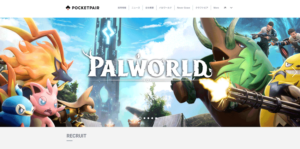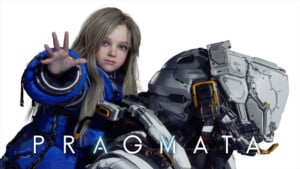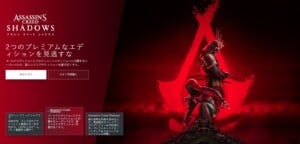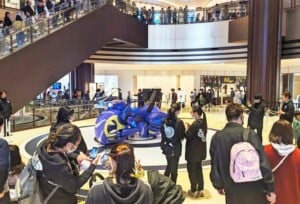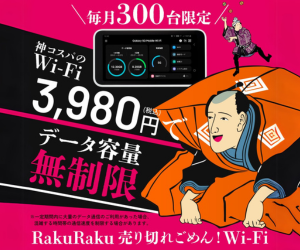Nintendo’s Palworld Patent War Backfires: Why the USPTO is Challenging the ‘Summoning’ Patent
【この記事にはPRを含む場合があります】

The hottest news circulating among gamers right now has to be the patent infringement lawsuit filed by Nintendo and The Pokémon Company against Pocketpair, the developers behind the global sensation Palworld. Since its announcement, the game has sparked a fierce international debate: is it merely a Pokémon clone, or does it represent a new era of innovation? Many assumed that once Nintendo’s renowned legal team—often nicknamed the “Nintendo Ninjas”—got involved, the battle was over.
However, this complex intellectual property war has transcended a simple corporate dispute. It has become a global controversy questioning the very nature of creative freedom and the patent system within the gaming industry. In a highly unusual turn of events, the tide may be turning against Nintendo, particularly in the United States. This article breaks down why the lawsuit was filed, details the latest developments in the US and Japanese legal arenas, and explains why Nintendo’s position in America is now facing severe jeopardy. Read on to gain clarity on this complicated legal fight and understand the hints about where the industry might be headed next.
- Palworld Explained: What Is This Massive Hit Game?
- Why the Legal Battle is About Patents, Not Plagiarism
- The Core of the Litigation: Game Mechanic Patents
- "Split Applications" and the Strategy of Restriction
- Patent Trolling and the Flaws of Game System Patents
- Timeline of the Lawsuit: Recent Setbacks for Nintendo
- The Reversal: Why Nintendo is Facing Defeat in the U.S.
- Is Character Design Infringement Still an Issue?
- The Clash of Cultures: MODs and the Threat to Creativity
- The Future of Gaming: Preventing Patents from Becoming a Stumbling Block
Palworld Explained: What Is This Massive Hit Game?
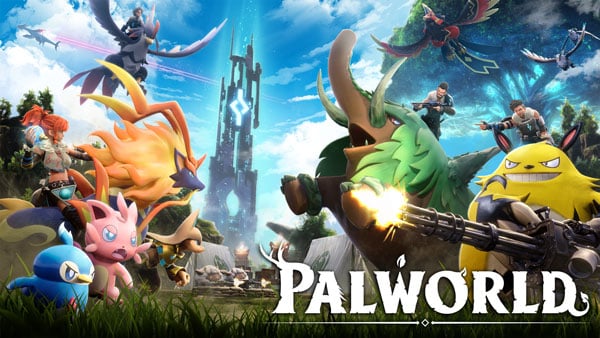
(Source: PR TIMES)
Palworld is an open-world survival crafting game developed and published by the Japanese studio Pocketpair.
The game centers on the Palpagos Islands, where players capture creatures called “Pals” using “Spheres,” then utilize them for base building, combat, and survival.
Since its Early Access release on January 19, 2024, Palworld‘s popularity has exploded. In just one month, it surpassed 25 million total players, hitting 15 million copies sold on Steam and 10 million users on Xbox. It was a particularly massive hit in the American market.
A key feature that garnered media attention was the game’s dark twist on the monster-collecting genre: players can force Pals into hard labor, sell them, or even use them for food. The game was quickly dubbed “Pokémon With Guns”. While the core concept involves collecting monsters, the CEO of Pocketpair stated that the survival elements were inspired by games like Rust and ARK: Survival Evolved.
Pocketpair, founded in 2015, is an indie studio. In July 2024, they established Palworld Entertainment Inc., a joint venture with Sony Music Entertainment and Aniplex, aimed at expanding the IP globally.
Why the Legal Battle is About Patents, Not Plagiarism

Immediately following Palworld‘s release, social media erupted in controversy over claims that some Pal designs closely resembled Pokémon, raising copyright infringement (plagiarism) allegations.
The Pokémon Company issued a statement on January 25, 2024, without naming Palworld, confirming that they would investigate any intellectual property (IP) infringement and take appropriate action.
However, eight months after the game’s launch, on September 19, 2024, Nintendo and The Pokémon Company officially sued Pocketpair in the Tokyo District Court, not for copyright infringement, but for patent infringement. The lawsuit seeks an injunction to halt the game’s activities and demands damages (a minimum of $100,000—¥10 million, split between the two companies).
The Core of the Litigation: Game Mechanic Patents
According to Pocketpair, the lawsuit revolves around three Japanese patents related to fundamental game mechanics:
- Patent No. 7493117 (Capture/Combat): Concerns the mechanism of throwing an item (like a Sphere) to capture a field character or summon a battle character to initiate combat.
- Patent No. 7545191 (Throwing Items): Concerns selecting one of multiple capture items and throwing it in the aiming direction.
- Patent No. 7528390 (Mounting/Movement): Concerns the ability of the player to perform an input while airborne to mount a character (a flying Pal) and move through the air (the “flying start” mechanic).
“Split Applications” and the Strategy of Restriction
Crucially, all three patents cited in the lawsuit were officially registered after Palworld‘s early access release in 2024.
However, they were obtained using a legal maneuver called a “split application” based on “parent patents” originally filed in 2021. This strategy allows Nintendo to narrow the claims of a pending application to specifically target features implemented in a competitor’s product, such as Palworld, thereby gaining an advantage after the competing product has launched.
Nintendo’s decision to pursue patent infringement instead of copyright infringement is seen as a strategic move. Patent infringement claims, especially concerning game system mechanics, are often easier to prove than complex copyright claims concerning character design similarities.
Furthermore, legal experts suggest that Nintendo’s actual goal is not the minimum $100,000 in damages (which is minimal compared to Palworld‘s estimated $692 million in sales). Instead, their true objective is an “injunction”—forcing Pocketpair to remove core mechanics like the Pal-capturing system and specific summoning/mounting methods from the game. If successful, this would mandate a fundamental redesign of Palworld‘s gameplay experience.
Patent Trolling and the Flaws of Game System Patents
The move by Nintendo—a massive industry veteran—to utilize patents derived from split applications after a hit rival game was launched has led to accusations from international media and legal experts that they are engaging in “patent troll” behavior.
The Threat of “Obvious Patents”
Patent law is designed to encourage innovation by granting exclusive rights to genuinely novel inventions. However, there is a significant debate in the gaming world about allowing large corporations to monopolize common game ideas or combinations of existing technologies through patents.
Pocketpair has challenged Nintendo’s core patents by arguing they lack novelty and inventive step (non-obviousness) because “prior art” already existed in popular titles like ARK: Survival Evolved and Final Fantasy XIV. Some legal voices argue that Nintendo’s patents are weak—often referred to as “flimsy patents” or “obvious solutions to a common problem”—and question why the Japan Patent Office (JPO) approved them in the first place.
Some legal analysts believe that this lawsuit may be an example of a SLAPP suit (Strategic Lawsuit Against Public Participation), where a large company uses its massive resources to stifle the expression of a smaller rival, capitalizing on a potentially weak or “accidental” patent grant.
Game Systems Should Be Shared Resources
A fundamental principle of IP law is that while “works (copyright) belong to the creator, ideas (patents) belong to everyone”. Patents generally expire after 20 years to promote new innovation. If long-established concepts or systems can be indefinitely restricted by large companies, it stifles the iterative nature of game development.
As some critics point out, the basic concept of Pokémon—capturing and battling monsters using balls—dates back over 30 years. The idea itself should ideally enter the “public domain,” allowing anyone to build upon it commercially.
Timeline of the Lawsuit: Recent Setbacks for Nintendo
The patent battle between Nintendo and Pocketpair has seen parallel and dramatic developments in both Japanese and U.S. patent offices in late 2025.
| Date | Key Event | Location |
|---|---|---|
| Jan 19, 2024 | Palworld launches in Early Access, becomes a massive hit. | Japan/Global |
| Jan 24, 2024 | Nintendo issues a statement vowing to investigate potential IP infringement and files DMCA against Pokémon mods for Palworld. | Japan/Global |
| Jul 10, 2024 | Pocketpair, Aniplex, and Sony Music Entertainment establish Palworld Entertainment Inc.. | Japan |
| Sep 18, 2024 | Nintendo and The Pokémon Company sue Pocketpair for patent infringement in the Tokyo District Court. | Japan |
| Nov 30, 2024 | Palworld releases patch v0.3.11, removing the feature to throw a Pal Sphere to summon Pals (a proactive measure). | Japan |
| Feb 21, 2025 | Pocketpair submits legal documents asserting the existence of prior art, including MODs. | Japan |
| May 8, 2025 | Palworld releases patch v0.5.5, changing the gliding mechanic (using an item instead of the Pal itself) as a proactive measure against a patent claim. | Japan |
| Oct 17, 2025 | Nintendo’s related patent application is rejected by the Japan Patent Office (JPO) for lacking “inventive step”. | Japan |
| Nov 3, 2025 | The USPTO Director personally orders the re-examination of Nintendo’s “Summoning Character” patent (397 Patent). | U.S. |
The Reversal: Why Nintendo is Facing Defeat in the U.S.
Nintendo’s patent strategy has encountered significant difficulties, particularly in the U.S., where the backlash has translated into an official legal challenge.
The USPTO’s Unheard-of Intervention
In the U.S., Nintendo had secured a patent (often called the 397 Patent) covering the mechanic of summoning a sub-character to battle on the player’s behalf—a mechanism critics feared could be applied to numerous games beyond Pokémon.
However, on November 3, 2025, in a move described as “highly rare” and the first of its kind in over a decade, U.S. Patent and Trademark Office (USPTO) Director John A. Squires personally ordered a re-examination of this patent.
The Director’s intervention was fueled by the determination that the patent’s validity was undermined by “new and serious questions of patentability” due to existing prior art. The two key pieces of prior art cited were:
- A patent filed by Konami in 2002, related to a sub-character fighting alongside the player, either automatically or manually.
- A patent filed by Nintendo itself in 2019 and published in 2020, also concerning a sub-character battling alongside the player.
The irony of Nintendo’s own prior patents being used against them highlights the weakness of their current claims. Legal experts consider this re-examination order a “monumental blow” to Nintendo’s legal strategy and believe it is highly likely that the U.S. patent will ultimately be revoked.
The decision by the USPTO Director was reportedly influenced by the “public outrage” surrounding the patent in games media and among the U.S. patent law community. The backlash against Nintendo’s perceived attempt to “control the industry itself” by patenting general game mechanics was so significant that it reached the highest levels of the USPTO.
The Japanese Patent Office Agrees: Lack of Inventive Step
Nintendo’s legal challenges are not limited to the U.S. In Japan, one of Nintendo’s patent applications related to the Palworld case (a split application) was issued a “Notice of Reasons for Refusal” (拒絶理由通知) by the Japan Patent Office (JPO) on October 17, 2025.
The JPO determined that the application lacked an “inventive step” (meaning the idea was obvious to someone skilled in the art). They cited multiple existing games as prior art:
- ARK: Survival Evolved
- Monster Hunter 4
- Craftopia (Pocketpair’s earlier game)
- Pokémon GO (Nintendo’s own title)
While a Notice of Reasons for Refusal is a common procedural step and not a final rejection, the fact that the JPO cited multiple external and internal games—including Nintendo’s own hit, Pokémon GO—suggests that even the Japanese patent system views these game mechanics as non-novel. This finding, related to the same family of patents being asserted in the lawsuit, further undermines the credibility of Nintendo’s entire patent assertion strategy.
Is Character Design Infringement Still an Issue?
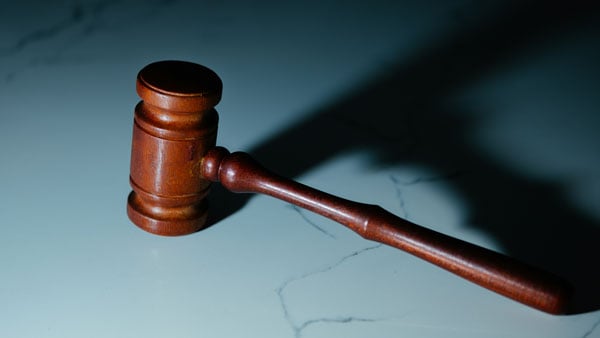
Many readers wonder why the lawsuit focuses on patents when the immediate controversy centered on the alleged plagiarism of character designs.
Nintendo’s decision to avoid a copyright infringement lawsuit likely stems from the legal difficulty of proving it.
Ideas Are Not Protected by Copyright
Copyright law protects the “expression” (e.g., a specific drawing or narrative), whereas patent law protects the “invention” or “idea”. A key legal principle is that “concepts are not protected by copyright”.
Simply creating a cute monster or using a ball to capture creatures falls into the realm of general ideas, not specific protected expression. Unless Pocketpair could be proven to have stolen the actual assets or replicated the visual expression of a Pokémon exactly—a difficult standard to meet—a copyright claim would be hard to win.
Some analysts speculate that Nintendo may have chosen patent infringement as a “low-risk” asset. If they lost a high-profile copyright suit, it could set a legal precedent that legitimizes close design similarities, inviting further clones. By focusing on patents, a loss merely invalidates a few debatable patents.
The Clash of Cultures: MODs and the Threat to Creativity
The Nintendo vs. Pocketpair lawsuit has extended beyond the two companies, drawing in the wider gaming community and potentially impacting the culture of creative freedom.
A Threat to Broad Game Mechanics
The specific game mechanics Nintendo is attempting to monopolize (e.g., summoning allies to fight, specific forms of movement) are broadly used across the industry. If these claims are upheld, it poses a “fundamental threat” to creativity, potentially impacting games like Persona, Digimon, and World of Warcraft.
Previous attempts to patent core systems, such as Warner Bros.’ “Nemesis System” in Shadow of War, demonstrated how patent monopolies can block other developers from utilizing engaging gameplay concepts.
The MOD Prior Art Controversy
In their legal defense, Pocketpair challenged Nintendo’s patents by submitting evidence that the mechanics had already been realized through non-official game modifications (MODs), such as a Pokémon MOD for Dark Souls 3 (called “Pocket Souls”). They argue these community creations constitute “prior art”.
Nintendo countered this move by arguing that MODs cannot count as prior art because they are not standalone technology; they require the original game to function. This position has been called one of the “most foolish arguments” by some IP specialists.
If Nintendo’s argument is accepted, it could destroy the long-standing, informal “gray area” that allowed MOD creators to operate. If MODs are determined not to be prior art, game companies could aggressively patent mechanics developed by MOD creators and then sue the modders themselves for infringement. This potential regulatory crackdown has sparked outrage among the PC gaming and MOD communities, who feel Pocketpair is jeopardizing the entire ecosystem.
The Future of Gaming: Preventing Patents from Becoming a Stumbling Block
The lawsuit has placed Nintendo in a precarious position, highlighted by the unusual USPTO re-examination and the JPO’s rejection notices. The legitimacy of Nintendo’s core patent claims is severely weakened.
Nintendo is expected to respond to the JPO’s refusal by amending its claims to secure patent registration. However, the controversy reinforces the difficulty in patenting generalized game systems.
The fundamental issue revealed is that because game systems often share similar elements across different titles, determining what constitutes a valid, non-obvious patent is immensely challenging. If patents act as a stumbling block for emerging game development, innovation suffers. Many critics feel that Nintendo may have overreached in this instance.
While granting some patents is necessary to protect genuine innovation, overly broad or “obvious” patents are detrimental. To safeguard the industry’s health, stricter standards for software patents are needed—especially preventing patents on ideas easily conceived by experts. Furthermore, patent granting bodies must have a robust understanding of the gaming industry’s history and existing technologies to prevent “flimsy patents” from passing inspection.
Ultimately, this case is about more than just a verdict between two companies; it is a critical step in establishing the future “rules of engagement” that will govern creative freedom for all developers.
Satoshi / Editor-in-Chief, Minna no RakuRaku Magazine
SEO & AI Specialist. Gadget, Game & Urban Legend enthusiast. Former musician (songwriter). Leveraging web marketing experience to write on the theme of “easy tech.” Also manages internal AI implementation.


